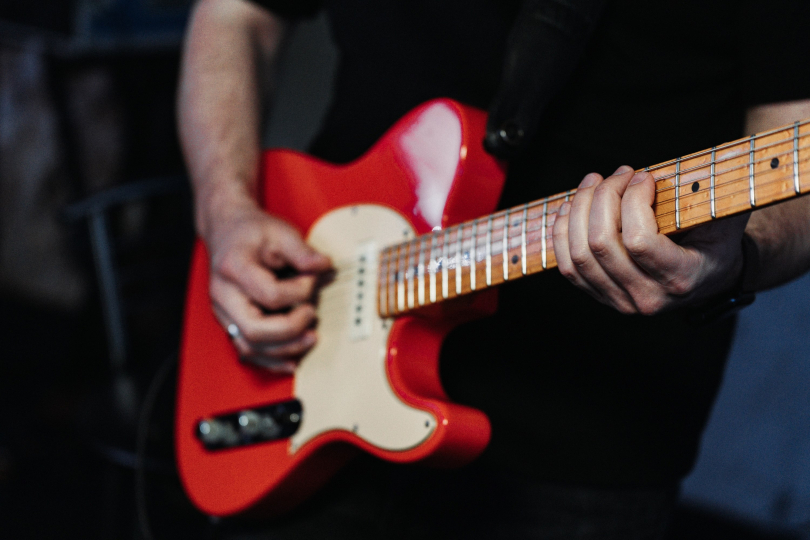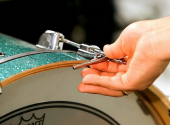
TOP 5 Unique Guitar Tunings
In addition to the tremendous advances in digital technology and the gradual elimination of any gear that weighs more than five kilos, a new trend has emerged in the guitar world. Yes, I'm talking about the omnipresent and increasingly deeper down tuning of not only seven-string but also eight-string guitars. Bass players have to follow the trend, and if you play metal or other hardcore styles, you have almost no chance to play without flowing frets and at least three instruments set in different drop tunings. However, is there a need to down-tune? Aren't there other ways to get new sounds and colours out of your guitar or bass? So today we're going to take a look at the TOP 5 unique tunings for guitar and possibly bass.
1. Ostrich Tuning
Ostrich tuning is a type of trivial tuning. You tune each string to the same note, e.g. E-E-e-e-e'-e' or D-D-D-D-d'-d'. The term "ostrich tuning" comes from Lou Reed, who had his guitar tuned to a unison "E" in the song "The Ostrich" by The Primitives in 1965. Incidentally, this was the first commercial song in which you could hear trivial guitar tuning.
Drummer Moem Tucker claimed in an interview with the magazine What Goes On? that Reed's "ostrich guitar" also had the frets removed and was stolen shortly after the album was recorded.
2. CABBAGE tuning
The C-A-Bb-A-G-E tuning forms the "crunchy" chord C13 and produces the English word CABbAGE. I first noticed this "vegetable" tuning in a video by Rob Scallon, who revels in crazy instruments, combinations and all sorts of musical oddities. However, even J.S. Bach – the genius of harmony – followed a similar approach, famously signing himself as Bb-A-C-B in The Art of Fugue (in Old German it reads B-A-C-H).
In one humorous commentary, I noticed a suggestion for BAGGAGE tuning for seven-string guitars. Do you want to try it out and make yourself famous on YouTube? Take for example Ichika Nito, who took CABBAGE up a notch and used double B instead of Bb on a seven-string guitar. The result is a beautiful guitar fugue with disturbing harmonies.
3. Tritone Tuning
You can tune your guitar to C-F#-C-F#-C-F# or, according to Shawn Lane, to B-F-B-F-B-F, which he made famous in his fusion virtuoso piece "Tri-7/5". This fascinating "devil's" tuning provides great possibilities for playing arpeggios, which can be played at incredibly fast tempos thanks to the symmetrical distribution and greater proximity of the notes. Just for the record, the tritone is an interval of augmented fourths (or diminished fifths, depending on your preference) and is associated with many legends from music history. However, if you tune your guitar to tritone symmetry, you will also get an instrument suitable for both left and right-handed players. I definitely recommend trying it out.
4. Angel bells of minor add9 tuning
Many of you will probably be familiar with the most common alternative tunings such as drop D tuning (D-A-D-G-B-E) and maybe some even know the Celtic tuning D-A-D-G-A-D, but D-A-D-F-A-E is quite a different cup of tea and it will probably take you a while to play anything decent in it. D-A-D-F-A-E is actually an open tuning of a D minor chord with an add9 (added ninth interval).
The open strings contain all the notes we need to build a D minor chord, plus the interval of a major ninth, which creates the amazing add9 sound. The base note D (6th and 4th strings), the minor third F (3rd string) and the perfect fifth A (5th and 2nd strings). Plus we have a sound joker in the form of a big ninth E (1st string). This tuning was used extensively by Opeth on their 2005 album Ghost Reveries.
You can also try tuning the major third variant (F# on the 3rd string) and experiment even further.
5. Ethereal Tuning
It was introduced to the world in 2019 thanks to Japanese virtuoso Ichika Nito. His broken configuration D-A-Db-Gb-Db-D alternates all notes except the 5th string A – with none of them more than two semitones away from the starting point.
It's a fantastic tuning for the fresh sound of major melodic progressions and extended chord shapes. Try fiddling with the dissonance of parallel octaves on the 4th and 2nd strings, or on the 6th and 1st strings, where there's a clash with a minor second (Db vs. D).
"I divide the guitar into the upper half [6-5-4str] and the lower half [3-2-1str] and think of it as the bass and treble of a piano. I press the strings alternately with [both] hands so that the sound is not interrupted. There are many notes […] as I want to connect them as smoothly as possible[…]," Ichika Nito describes his unique approach to playing and tuning.
If you have found an error or typo in the article, please let us know by e-mail info@insounder.org.



